For five years, she asked āWho murdered my daughter?ā Along the way, she found paths to peace

Darlene Guzman talks about her daughter, BreeāAnna, five years after she wasĀ killed.
Walk north on Riverside Drive on the edge of Silver Lake as cars barrel by in steady succession.
Pass the elementary school and follow the steel fence, bent and broken. There may still be silk flowers tied to its frame. Or a banner bearing the photo of a young womanās face.
Keep going.
Turn at the stoplight and head up the onramp, the one that only locals know. The highway will appear. On the right are pine trees, dirt, discarded bottles, bits of trash. At the top of the embankment rests a small wooden cross.
BreeāAnna Guzmanās bruised body was found here.
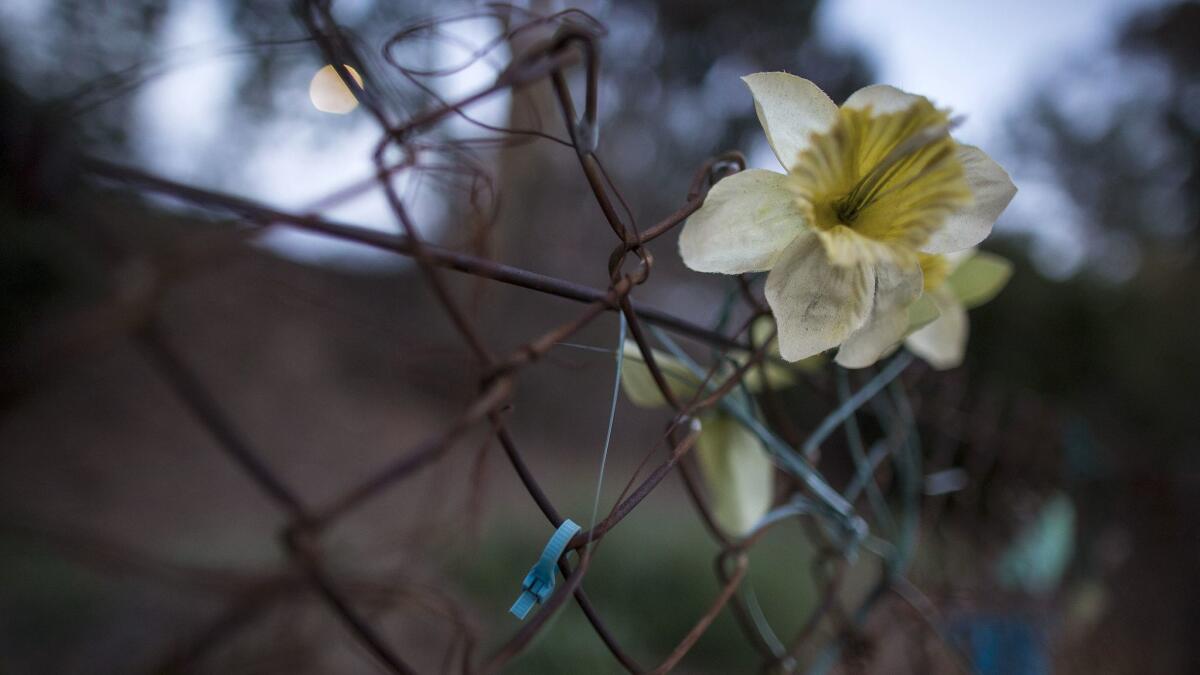
And this is the path her mother takes on moments she wants people to remember: the day BreeāAnna was born. The day she went missing 22 years later. The day police told a mother that the dead girl in the brush was hers.
It is not a joyful trek, but Darlene Guzman has found it can be peaceful.
After years of raging at the world, blaming herself, withering inside ā a deliberate, public walk feels honest and loud and productive.
When your daughter is killed, youāve got to find ways to survive.
This is the sequence Darlene plays on repeat:
BreeāAnna isnāt feeling well. She has a sore throat and is asking for tea. She wants to rest.
It is the day after Christmas, 2011. About 6:45 p.m.
Suddenly, BreeāAnna is getting dressed. Sheās putting on a magenta T-shirt and a gray sweater. Sheās wearing jeans and tan boots. And perfume. She wants to buy cough drops and meet her boyfriend, maybe grab some fast food.
Her 5-year-old daughter Janelle is playing with bubbles in the tub. BreeāAnnaās 11-year-old sister Rachel is there too. In the bedroom is BreeāAnnaās other daughter, Jayde, who is 1.
Darlene hands BreeāAnna a $5 bill. She doesnāt like her daughterās boyfriend. But she shrugs. Itās the holidays.
OK, she nods. When you get back, maybe we can watch a movie, Darlene says.
BreeāAnna assures her sheāll return soon. Then she walks out of their unit, down a flight of stairs and into the street.
The scene ends there. But Darleneās mind canāt help but give herself extra lines.
Donāt go, BreeāAnna.
Youāre not feeling well. Why donāt you just hang with us tonight?
Please.
Stay.
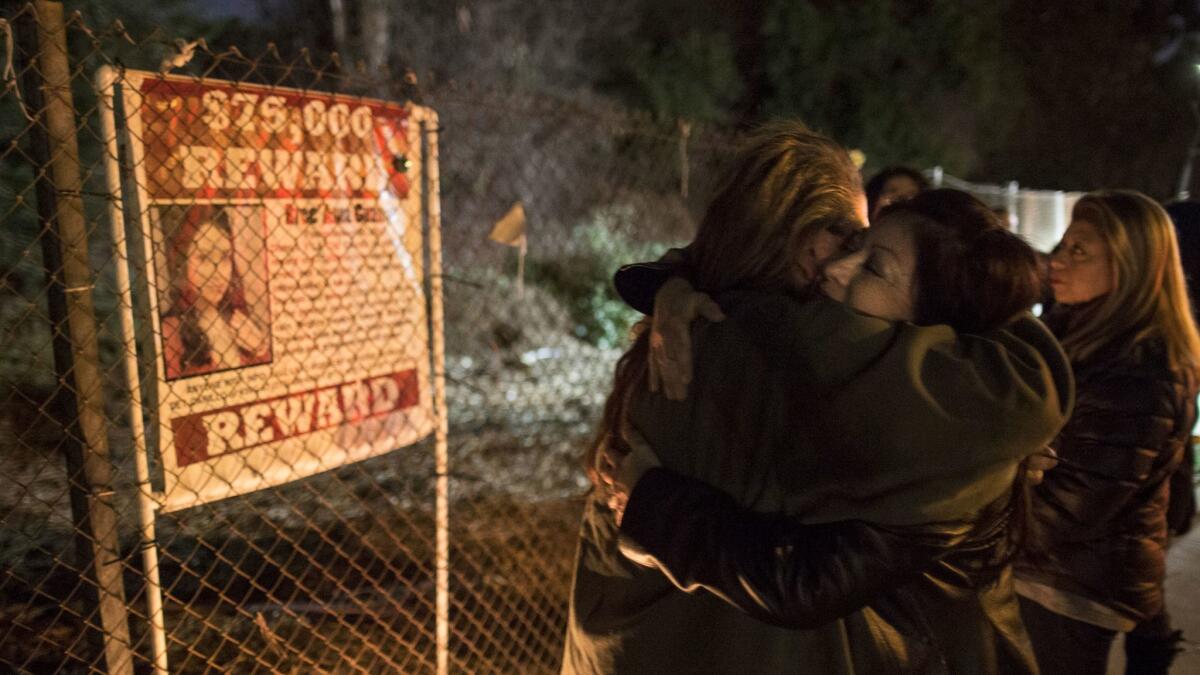
The day after Easter in 2011, a girl named Michelle Lozano was found wrapped in plastic bags and stuffed in a container. The 17-year-old lived less than a mile from the Guzmans in Lincoln Heights.
When BreeāAnna went missing eight months later, the neighborhood was on high alert for a serial killer. Her stepfather took to looking for a body, riding his bike along the Los Angeles River, checking in dumpsters.
But Darlene led daily search parties for a daughter she imagined was alive and in need of help. She mentally prepared to support BreeāAnna through rehab or therapy.
Homicide Report: Read the stories of L.A. County homicide victims Ā»
She printed thousands of fliers and loaded up friends and family members into the back of a borrowed truck. They hopped on highways, exiting to canvass neighborhoods and question store owners.
Have you seen this girl? Can we hang a flier in your window? Will you call if you hear anything?
Darlene sported a T-shirt with BreeāAnnaās face and confronted gang members. She hung banners and gave out her personal cell number.
Firing off emails to acquaintances as far away as New York, Washington, Colombia, Spain, Australia ā she made a plea. Please print the attached handout. Make copies. Post them anywhere, everywhere.
Dozens of strangers called. I saw your daughter. The details were always off. Wrong height, a description that didnāt make sense.
As overwhelming as it all was, Darlene liked having tasks to focus her frantic energy and wandering mind.
And it wasnāt just busywork.
āI thought I would find her,ā she recalled years later, her voice a shaky whisper.
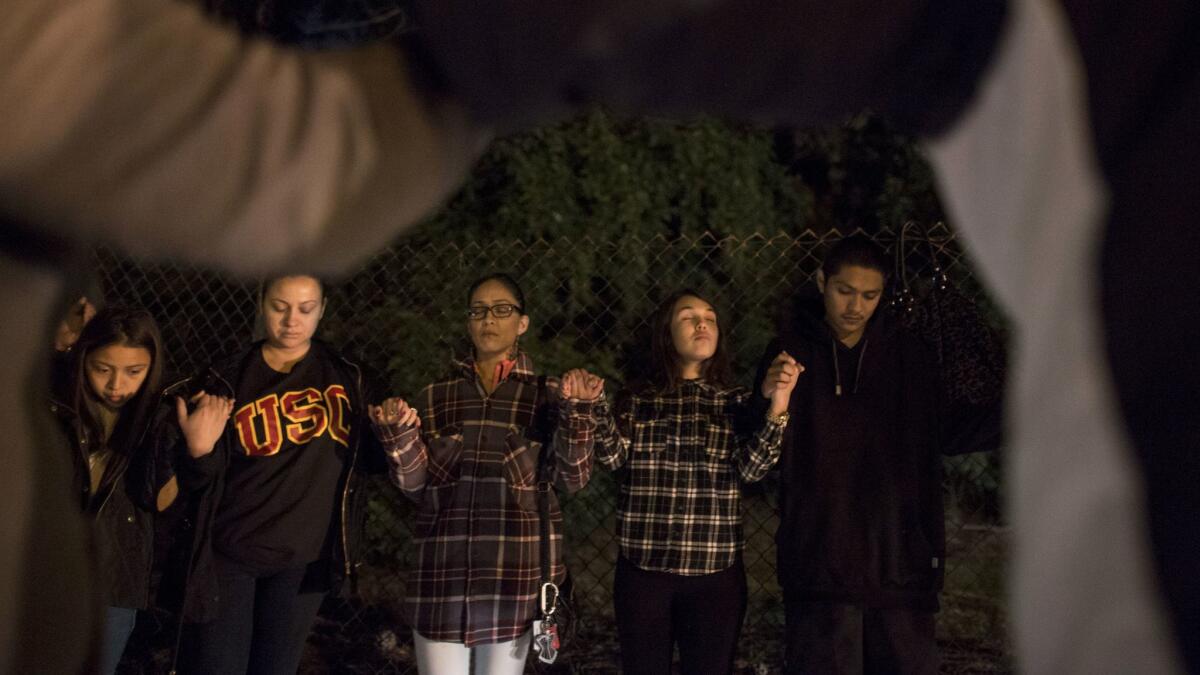
In the brush of an onramp to State Route 2, a body was discovered on Jan. 26, 2012. It was so decomposed that investigators could not make an immediate identification.
A Gemini tattoo on the back of the victimās neck helped.
BreeāAnna and her mother had gotten the matching symbols a few birthdays ago.
Authorities would later link BreeāAnnaās and Michelleās killings through forensic evidence.
But when Darlene heard the helicopters and commotion in her neighborhood that morning, she thought nothing of it. It was exactly one month since her daughter disappeared, and she was planning a vigil that night to reinvigorate interest.
When a TV reporter surmised that BreeāAnnaās body had been found just three miles from her home, Darlene called the station.
āHow dare you!ā she said. āYou donāt know! Weāre sitting here beside ourselves right now!ā
Somehow a photo of the scene was posted on social media. Darlene saw bare legs and feet caked in dirt.
And then she got a phone call. Detectives wanted to talk.
From inside a squad car, Darlene took in grim faces and gruesome words.
None of it registered.
āAm I supposed to cry?ā she asked. āGo crazy? Iām not feeling anything.ā
Afterward she asked a friend to take her somewhere she could be alone. She ended up at a house in the San Fernando Valley.
From there, she called family members who responded with screams.
āI said, āI gotta go, I just gotta go now,ā and I hung up. Once I vocalized it and said itās her, I just started crying, weeping,ā she said. āEvery cell in my body was aching and hurting.ā
For a while, the sidewalk below their balcony was a trail of candles. Darlene would sit outside and gaze down at the teddy bears and cards and photos and flowers.
At some point they all faded away.
She took a job packing rings into boxes at a downtown Los Angeles jewelry manufacturer. She had studied business management and worked as a bookkeeper but wanted an activity that felt robotic. Put on earphones, keep your head down, fill the order.
She had been 23 when BreeāAnna was born. Still in college, living with roommates, facing parenthood alone. Her own relationship with her mother was distant.
But she and BreeāAnna began a new narrative. They fought like sisters, laughed like friends. Shared secrets and body ink. Hoisted up each otherās dreams.
Darlene married Richard Duran, who raised BreeāAnna as his own. The couple had three more children, Matthew, Amanda and Rachel.
After she and Richard split, Darlene knew BreeāAnna could be relied on to help her siblings get ready for school, make dinner, oversee homework, bake birthday cakes. BreeāAnna was the one who compiled mixtapes of Cyndi Lauper and Madonna to sing to in the car, who hosted dance-offs and made ice cream sundaes.
The killing sent Darlene adrift. She barely ate. Snapped at her children. Smoked weed, tossed back bourbon. Wept.
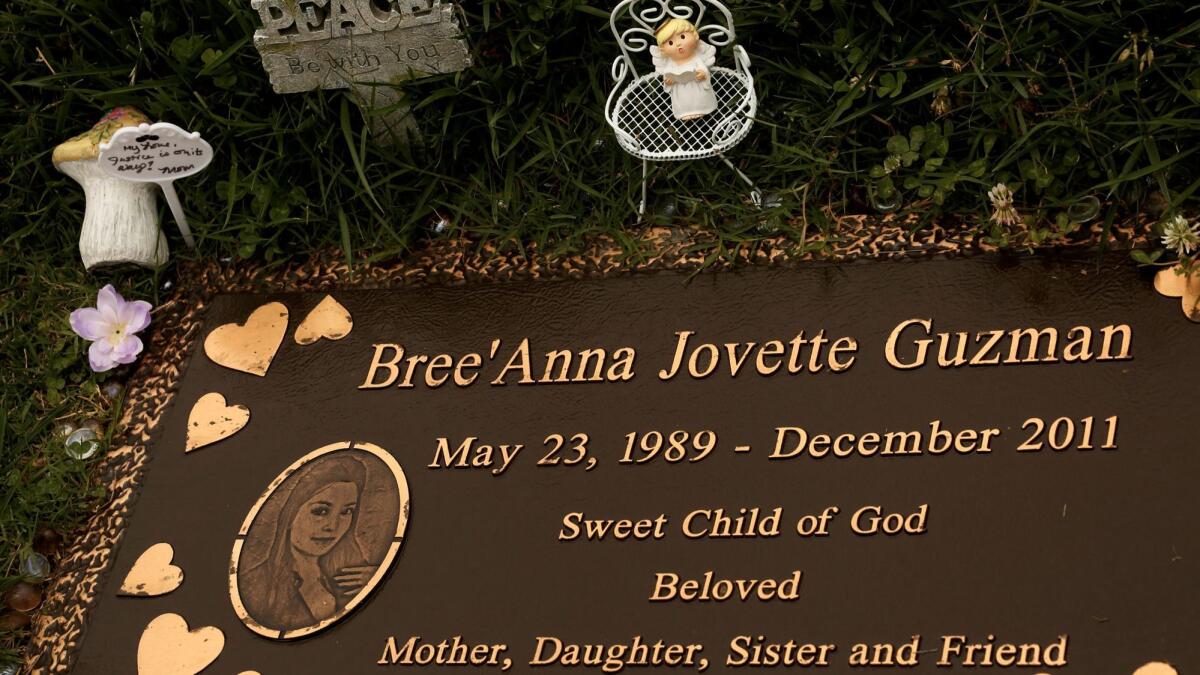
She pressured herself to keep BreeāAnnaās story relevant, to force the media, authorities and anyone with a possible clue to continue paying attention. She spoke as often as she could about a girl who longed to be a pastry chef and played confidant to a wide circle of friends.
When an anniversary came up, Darlene held vigils, sent out reminders. With every year, interest seemed to wane. āIām still here!ā she wanted to shout.
LAPD detectives promised the case would be solved, but substantial rewards for information went unclaimed.
Without a killer to hold accountable, Darlene shouldered the guilt. Why hadnāt she stopped BreeāAnna from leaving that night? What kind of mother would let this happen?
It wasnāt until the fall of 2015 that Darlene saw herself through her surviving childrenās eyes. She needed to change.
She entered a treatment center in Highland Park. For the first time, she had one-on-one sessions with a grief counselor.
āHe told me: āItās not your fault. Youāre not alone. BreeāAnna wants to see you able to breathe.ā
āāAll those days you had her with you in your life, you had those reins and you were in control. Grab them and do it again. She doesnāt want to see you like this.āā
The words held power and something slowly shifted. Darlene had closed herself off. She wanted to be open.
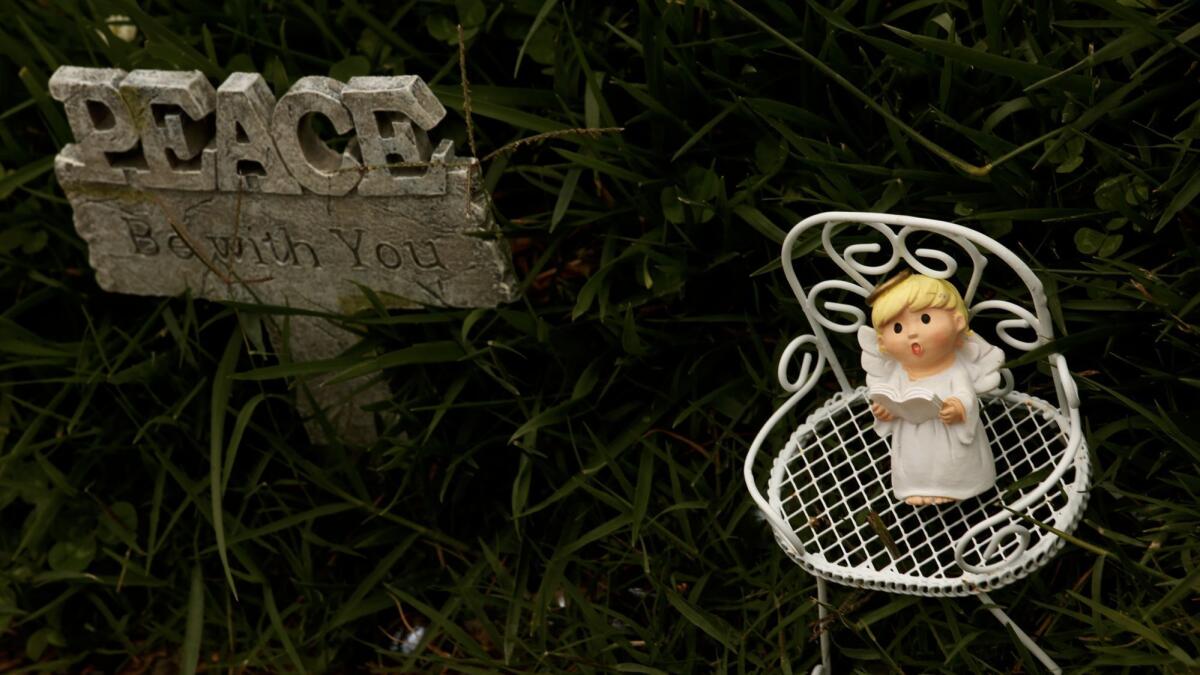
She got the call in May, two days after what would have been BreeāAnnaās 28th birthday.
A 32-year-old man who once lived in the neighborhood was arrested on suspicion of killing BreeāAnna and Michelle.
Geovanni Borjas was eventually charged with two counts of murder, two counts of rape and one count of kidnapping. Authorities said he was acquainted with Michelle and worked at an Eastside medical clinic that BreeāAnna frequented. A familial DNA search linked him to the crimes.
Darlene had trouble comprehending the news. Her body shook, led by shock, then joy, gratitude, relief.
She plans to attend the trial and will stay for as much as she can handle.
āI owe it to her,ā she said. āTo be there til the end. These years have placed me in a spot that I canāt turn back from. I have to keep going forward.ā
A couple of weeks after the arrest, Darlene and her 16-year-old daughter Rachel drive a quiet road that winds throughout a sprawling Glendale cemetery.
Like the path that leads to where BreeāAnnaās body was found, this one offers solace, an opportunity to tell a girl that she is not forgotten.
They soon arrive at a simple headstone embossed with gold hearts and tucked into the earth. Beside it lies a small white sign Darlene left not long ago with a handwritten note.
My love, justice is on its way.
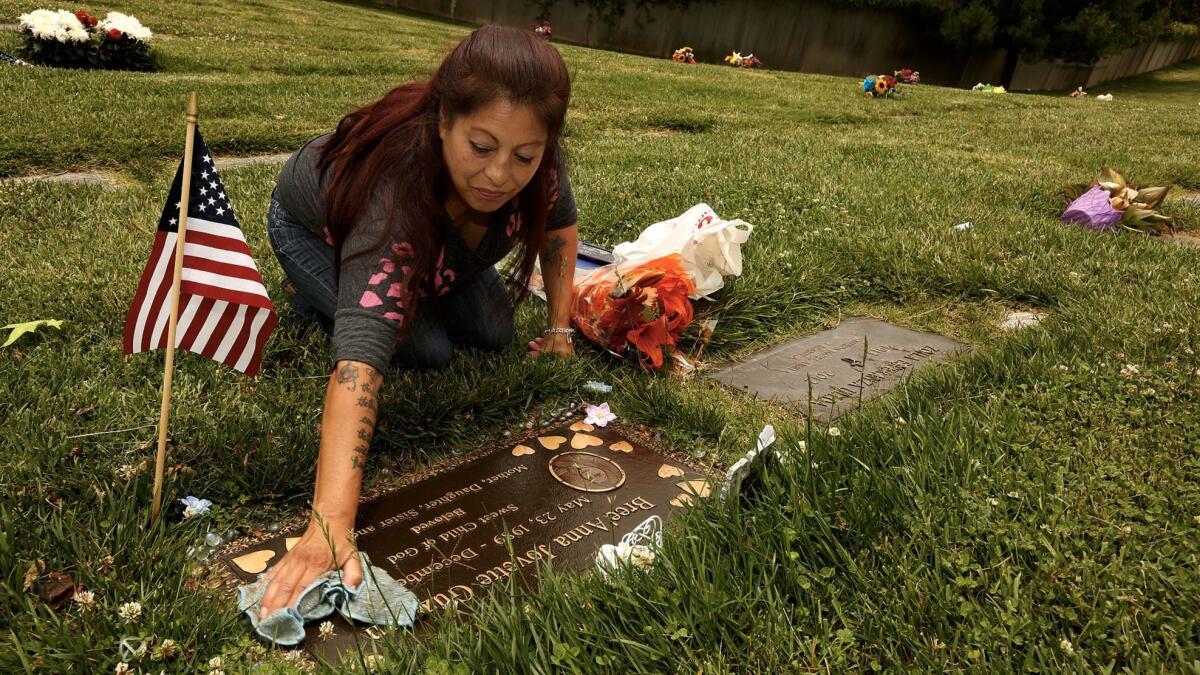
Twitter: @corinaknoll
ALSO
LAPD Chief Beck personally arrests officer on suspicion of having sex with a 15-year-old
Irate commuters threaten a lawsuit over narrowed streets in Playa Vista and Playa del Rey
Sign up for Essential California
The most important California stories and recommendations in your inbox every morning.
You may occasionally receive promotional content from the Los Angeles Times.








